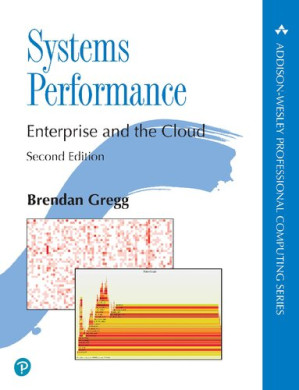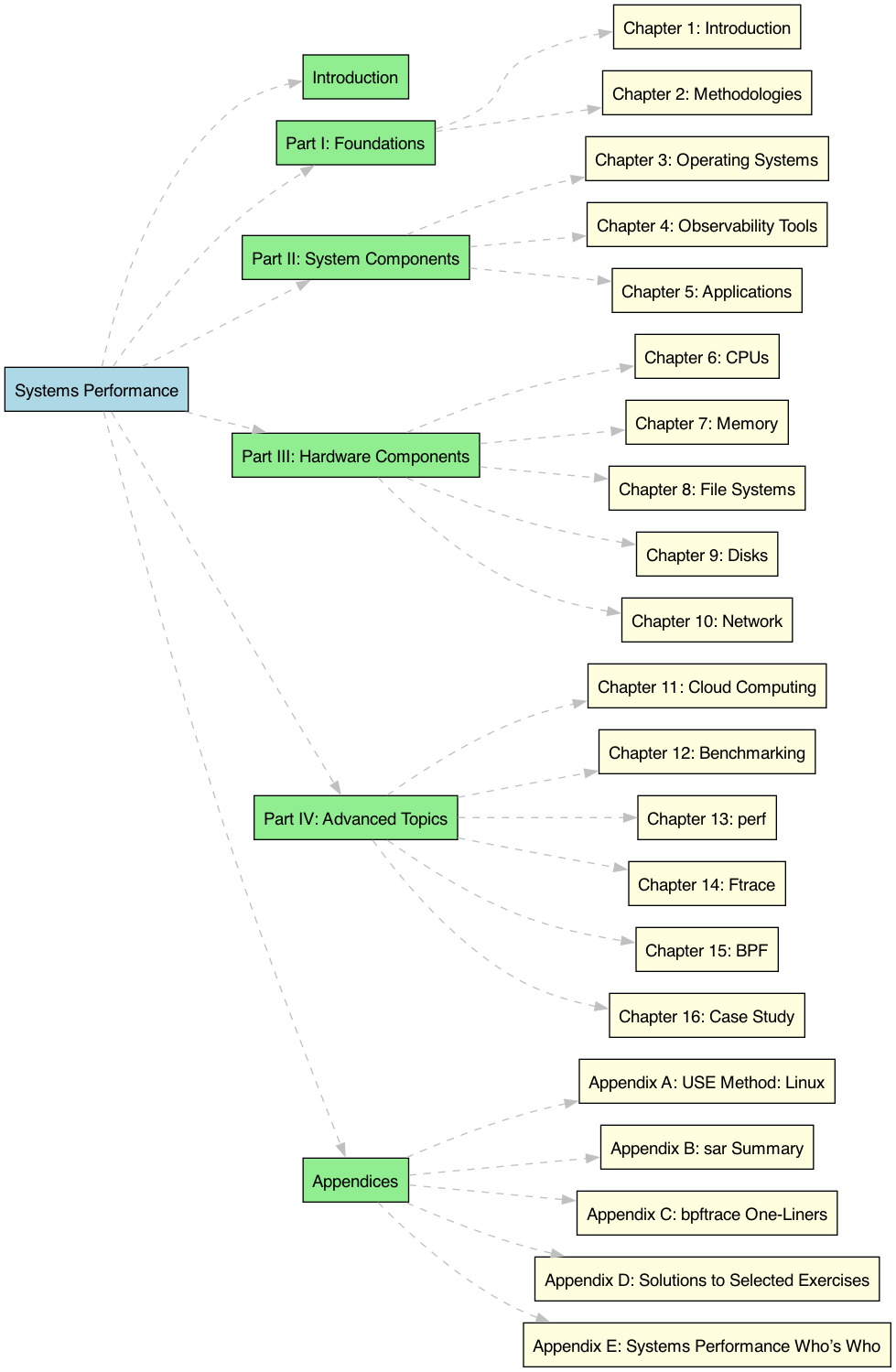Insights from Systems Performance: Enterprise and the Cloud, Second Edition
"Systems Performance: Enterprise and the Cloud" by Brendan Gregg is a comprehensive guide to understanding and improving the performance of computer systems. The book covers a wide range of topics, from the fundamentals of systems performance to advanced techniques for optimizing various system components. It provides practical methodologies and tools for performance analysis, making it an essential resource for system administrators, developers, and performance engineers.

Summary

Part I: Foundations
Chapter 1: Introduction
This chapter introduces the field of systems performance, outlining the roles, activities, and challenges involved. Key concepts include latency, observability, and the importance of methodologies in performance analysis. Gregg also presents case studies to illustrate practical applications of performance analysis.
Chapter 2: Methodologies
Gregg delves into various performance analysis methodologies, including the USE (Utilization, Saturation, Errors) method, the RED (Rate, Errors, Duration) method, and other performance tuning techniques. He discusses models, scalability, metrics, and the importance of proper monitoring and visualization.
Part II: System Components
Chapter 3: Operating Systems
This chapter covers the performance aspects of operating systems, focusing on kernel internals, system calls, interrupts, processes, and memory management. Gregg explains how to analyze and optimize these components to improve overall system performance.
Chapter 4: Observability Tools
Gregg introduces various observability tools used for performance analysis, including static performance tools, profiling, tracing, and monitoring tools. He discusses the importance of using the right tools for different types of performance issues.
Chapter 5: Applications
This chapter explores application performance, including optimization techniques and observability from the operating system perspective. Topics include CPU profiling, syscall analysis, thread state analysis, and distributed tracing.
Part III: Hardware Components
Chapter 6: CPUs
Gregg provides an in-depth look at CPU performance, covering topics such as CPU architecture, caches, pipelines, and scheduling. He explains methodologies for CPU performance analysis and introduces various tools for monitoring and profiling CPU activity.
Chapter 7: Memory
This chapter focuses on memory performance, including virtual memory, paging, swapping, and memory allocation. Gregg discusses memory observability tools and tuning techniques to optimize memory usage and performance.
Chapter 8: File Systems
Gregg examines file system performance, discussing caching, I/O operations, prefetching, and write-back caching. He provides methodologies for file system analysis and introduces tools for monitoring and tuning file system performance.
Chapter 9: Disks
This chapter covers storage devices, including disk I/O workloads, storage controllers, and the kernel I/O subsystem. Gregg explains how to analyze disk performance using various tools and techniques.
Chapter 10: Network
Gregg explores network performance, including network protocols, sockets, and physical connections. He discusses methodologies for network performance analysis and introduces tools for monitoring and optimizing network activity.
Part IV: Advanced Topics
Chapter 11: Cloud Computing
This chapter introduces operating system and hardware-based virtualisation methods used in cloud computing. Gregg discusses the performance implications of virtualization, including overhead, resource controls, and observability.
Chapter 12: Benchmarking
Gregg explains how to benchmark systems accurately and interpret benchmark results. He discusses common pitfalls in benchmarking and provides methodologies for effective benchmarking.
Chapter 13: perf
This chapter summarizes the capabilities of the standard Linux profiler, perf. Gregg provides an overview of perf commands and their use in performance analysis.
Chapter 14: Ftrace
Gregg introduces Ftrace, the standard Linux tracer, and its use in exploring kernel code execution. He covers various Ftrace capabilities and their applications in performance analysis.
Chapter 15: BPF
This chapter covers BPF (Berkeley Packet Filter) and its front ends, BCC and bpftrace. Gregg explains how to use these tools for advanced performance analysis and tracing.
Chapter 16: Case Study
Gregg presents a systems performance case study from Netflix, demonstrating a real-world example of performance analysis using various tools and methodologies.
Key Takeaways
- Comprehensive Methodologies: Gregg's detailed methodologies, such as the USE and RED methods, provide a structured approach to performance analysis.
- Tool Mastery: Understanding and using the right tools is crucial for effective performance analysis and optimization.
- Component Focus: Each system component, from CPUs to networks, requires specialized techniques and tools for performance tuning.
- Real-World Applications: The case studies and practical examples bridge the gap between theory and practice, showing how to apply concepts in real-world scenarios.
Personal Reflections
Reading Systems Performance: Enterprise and the Cloud has deepened my understanding of performance analysis and optimization. Gregg's emphasis on comprehensive methodologies and tool mastery resonates with my experiences in system administration. The detailed explanations and real-world examples provide valuable insights that are directly applicable to my work.
Conclusion
Systems Performance: Enterprise and the Cloud by Brendan Gregg is an essential resource for anyone involved in system administration, development, or performance engineering. Its comprehensive coverage of performance analysis methodologies, tools, and real-world applications makes it a valuable guide for optimizing system performance in both enterprise and cloud environments.